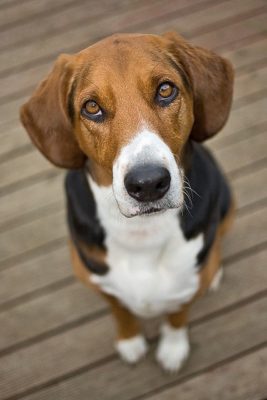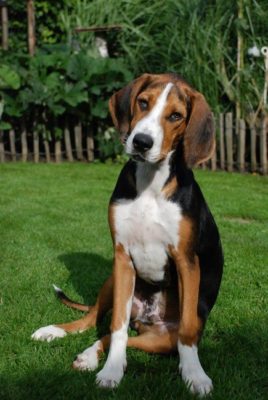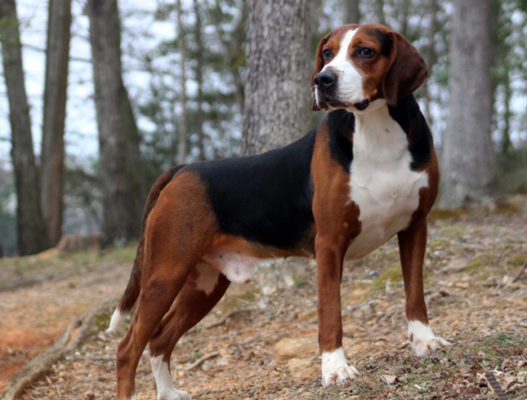Hamiltonstövare

The Hamiltonstövare will please you with its calm and balanced character; it is friendly and cheerful. Hamiltonstövare has no aggression, so the breed is not quite suitable as a guard dog. But in critical situations, it will stand up for its owner, no matter what it costs. It is too attached to people’s attention, affectionate, and devoted to family members.
Table of Contents
Breed Information
| Another Name | Hamilton Hound, Swedish Foxhound |
| Origin | Sweden |
| Height | Males 57-61 cm Females 53-57 cm |
| Weight | 22-27 kg |
| Fur | Short |
| Color | Tri-color: white, reddish-brown and black |
| Lifespan | 10-13 years |
| FCI Classification | Scent hounds and related breeds |
| Group | Hunting dogs |
| Price | From $650 |
Breed Photos
Origin History
As the popularity of hunting increased in the sixteenth century, so did the popularity of hounds. Until the end of the XVIII century, new breeds of hunting dogs from different European countries began to be imported to Sweden more often. Therefore, among the experienced owners and the nobility, new breeds of hounds were in great demand. At the end of the 19th century in Sweden, Count Adolf Patrick Hamilton just conceived the idea of creating an ideal, in his opinion, hound that would meet all his standards. For several years, Hamilton carefully studied all the subtleties of breeding and deduced some of the breed’s mandatory criteria – intelligence, agility, physical strength, and developed sense of smell.
The Beagle, English Foxhound, Hanoverian, and Holstein Hound were the basis for forming the new breed. For the first time, the new Swedish hound (this was the breed’s original name) was presented at a show in 1886. It was quite popular throughout the country and was considered an ideal hunter for hares and foxes, which Hamilton tried to achieve. By 1921, it was officially named the Hamilton Hound after its creator. Between 1968 and 1981, the breed began to be actively propagated throughout Great Britain and Germany.
Appearance
The Hamilton Hound is a medium-sized dog with incredibly developed hunting instincts, endurance, an unmatched sense of smell, and clear vision. It has lightning-fast reaction and clarity of mind. The body is moderately elongated and harmonious.
Elongated head, the noticeable elongated transition to the muzzle, no sagging skin. The eyes are dark brown with a calm and attentive look (light brown eyes are also acceptable but not desirable). Triangular hanging ears, set high and slightly raised on the cartilage. The neck is long and well-muscled. The tail is set high, saber-shaped, and tapering toward the end. The limbs are of medium length, wiry, and strong.
The coat is short but dense. The color can be exclusively tricolor: the upper and lateral parts of the neck, back, sides, the upper side of the tail are black. Part of the head, cheeks, limbs, lower part of the sides, and tail are reddish-brown. The front part of the muzzle and forehead, the lower part of the neck and chest, and the lower parts of the limbs and the end of the tail are snow-white.
Character
The Hamiltonstövare will please you with its calm and balanced character; it is friendly and cheerful. Hamiltonstövare has no aggression, so the breed is not quite suitable as a guard dog. But in critical situations, it will stand up for its owner, no matter what it costs. It is too attached to people’s attention, affectionate, and devoted to family members.
Also very emotional and playful, will be a great friend for you and your child. However, this emotionality also affects the dog’s behavior – it likes to express all its emotions through loud and resounding barking. Therefore, keeping a Hamilton Hound in an apartment is not a good idea.
Hamiltonstövare loves freedom, active time, and needs long walks with physical exertion. Other dogs are treated calmly, which is not the case with cats. Early socialization will be needed here if you want to “befriend” these pets.
Care
Hamiltonstövares are completely unpretentious in their care. Their hair is short and thick, and shedding is seasonal. It is enough to comb out the hair several times a week. Frequent bathing of the pet is not recommended not to harm the natural and normal growth of the coat and the skin’s condition.
One water treatment once every four months is enough. In case of minor soiling, it is better to wipe the pet with a damp towel. Don’t forget about obligatory hygiene procedures: clean the ears and eyes at least once every few weeks. Keep an eye on the condition of its claws, and if they are not shrunken, trim them about once a month.
Training
The Swedish Hound is an active dog with a good disposition for training. His goal is to please his master in all situations. It likes to achieve the set goal, so you will not have any problems in the education and training of the Hamilton Hound. It can be cranky only if it does not get proper attention from the owner. Do not perceive aggression, humiliation, and violence as not a good training choice.
Common Diseases
Hamiltonstövare have good health and good immunity to most diseases, but there is still a risk of some diseases developing:
- epilepsy;
- hip dysplasia;
- dislocation of the kneecap;
- stomach congestion;
- allergic reactions;
- obesity.
Nutrition
An interesting feature of Hamilton Hounds is considered to be their incredible zeal for food. They are the real gluttons; they want to eat everything and in large quantities. Therefore, it is recommended to monitor their diet carefully, as they are prone to gaining excess weight. To avoid health problems, your pet needs a balanced diet with sufficient protein. If you prefer dry food, it should be premium food for medium breeds. It should contain all the necessary ingredients and vitamins for the normal development of your pet.
 Small Münsterländer
Small Münsterländer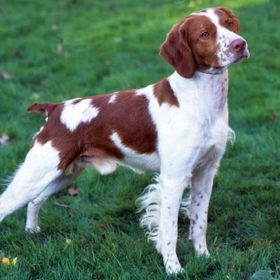 Brittany
Brittany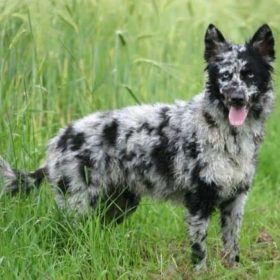 Mudi
Mudi East European Shepherd
East European Shepherd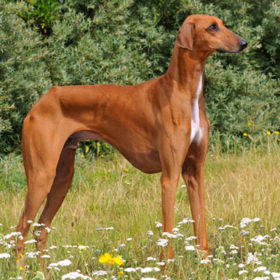 Azawakh
Azawakh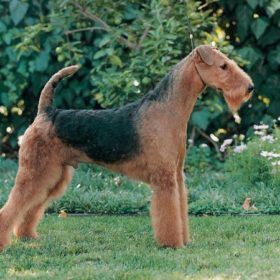 Airedale Terrier
Airedale Terrier